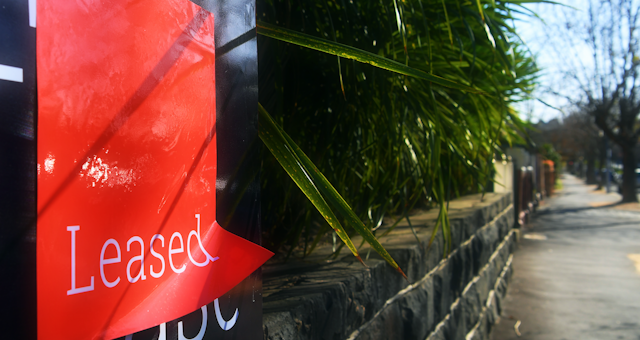This article is part of The Conversation’s series examining the housing crisis. Read the other articles in the series here.
Australia’s rental vacancy rate has hit a historic low of close to zero. The latest estimate from SQM Research is 1.1%. The latest estimate from the property listing firm Domain is 0.7%.
As would be expected with hardly any of Australia’s rental properties vacant and available for rent, rents have soared – at first in 2022 only for newly advertised properties, and later for properties in general as measured by average rents.
The Bureau of Statistics measure of average capital city rents climbed 7.3% throughout 2023. It would have climbed by more – by 8.5% – had the bureau not taken account of the increased rent assistance in the May budget, which depressed recorded rents by 1.2%.
Demand surged while new supply sank
Vacancy rates have fallen and rents have climbed because the demand for living space has surged; at first in the aftermath of lockdowns as Australians sought accommodation with fewer housemates and more home office space, and later as borders reopened and Australia’s population swelled.
At the same time, the number of dwellings completed dived in response to shortages of both labour and materials.
Before COVID about 50,000 new dwellings were completed per quarter. Since then, completions have rarely exceeded 45,000.
Tweaking tax concessions would do little to help
While the Australian Greens are pressing the government to wind back capital gains tax concessions and limit negative gearing in order to wind back home prices, there’s little reason to think the changes would do much to reduce rents.
Half of all Australian landlords negatively gear by making a net loss on rental income in order to profit later from concessionally taxed capital gains. Attacking these tax concessions would be likely to cause some of them to reconsider being landlords.
But if they sold, more renters would be able to buy and stop renting, leaving the balance of renters and properties for rent little changed.
Rent assistance and caps won’t much help either
While there is popular support for increasing rent assistance, and while it has materially cut rents paid over the past year, it won’t create more rental properties.
Very big increases in rent assistance might even lift rents further by increasing the amount renters are able to pay. However, the effect is unlikely to be big because Commonwealth rent assistance is restricted to welfare recipients.
Rent caps or freezes don’t increase supply either, and run the risk of encouraging a black market in bidding to pay rents over the legally sanctioned cap.
What’s needed is more homes, in the right places
The government’s new Housing Australia Future Fund and associated agreements are intended to support the delivery of 20,000 new social and 20,000 new affordable homes over the next five years.
Separately, the Commonwealth and the states have agreed to an ambitious target of 1.2 million “new well-located homes” over the next five years, up from 918,200 over the past five years.
The Commonwealth has set aside A$3 billion for “performance-based funding” to the states paid at the rate of $15,000 for each new well-located home they deliver in excess of their share of 1 million new homes in five years.
Read more: National Cabinet’s new housing plan could save renters billions
If the states and territories are able to deliver 1.2 million homes over five years rather than 1 million, Grattan Institute analysis suggests rents will be 4% lower than they would have been.
NSW is displaying the sort of initiative that will be needed. The state is allowing developers of projects worth more than A$75 million to build taller buildings with more accommodation as long as they use 15% of the floor space for affordable housing.
NSW is also allowing denser development within 400 metres of 31 train stations.
Build-to-rent would help
In Australia, most rental properties (even apartments) are owned by individual so-called “mum and dad” investors.
Overseas in the United States and Europe, they are more likely to be owned by corporations who build entire blocks to lease.
These corporations are more concerned about long-term returns than individual owners who want the flexibility to sell, so they tend to offer long-term leases on better terms.
In last year’s budget the government offered build-to-rent tax rules which the Property Council of Australia says could create thousands of extra homes.
On one hand, they are unlikely to be homes for low-income renters. Developers require commercial returns. On the other hand, an increasing number of renters have high incomes.
The Australian Housing and Urban Research Institute says while in 1996 households with incomes worth $140,000 a year or more in today’s dollars accounted for only 8% of renters, by 2021 they accounted for 24%.
Read more: The Help to Buy scheme will help but won't solve the housing crisis
Pre-fabs could also help, and more apprentices
Another thing that would help is encouraging the use of prefabrication to cut construction times and costs, using locally sourced materials.
Prefabricated homes were used to house migrants after the second world war. More recently they have been used to house NSW flood victims.
They will still require skilled builders and tradespeople, who are in short supply. Only about half of enrolled apprentices complete their training, and the dropout rate has been climbing.
The government has announced an in-depth review of Australia’s system of apprenticeship support. It’s due to report later this year.
It might also help to prioritise the migration of tradespeople. It’s hard to build more homes in the right places, but that’s what we need.
Read more: A prefab building revolution can help resolve both the climate and housing crises

